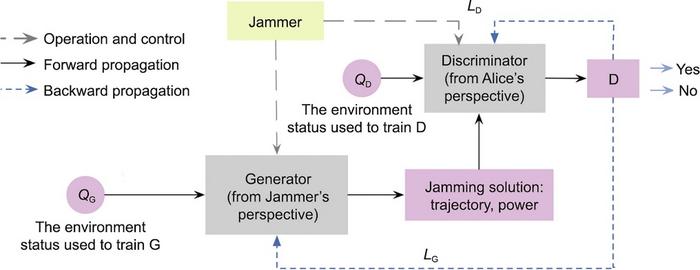In the rapidly advancing field of wireless communication, ensuring the security of transmitted data is of utmost importance. Researchers are increasingly turning their attention to covert communication, a method designed to mask the existence of communication itself, thus protecting private information from potential adversaries. A recent publication in the journal Engineering investigates the latest advancements and emerging research trends within the domain of intelligent covert communication.
Covert communication is defined as low probability of detection (LPD) communication, which aims to obfuscate communication activities, ensuring that this transfer of information goes undetected. This approach is particularly crucial in today’s digital landscape, where the volume of sensitive data being transmitted over wireless systems has surged. With the escalation of data traffic, traditional methods of encryption and physical layer security, while still essential, may not suffice. Covert communication provides an additional layer of security by concealing communication behaviors themselves.
The researchers who conducted this study commenced by exploring the foundational concepts and performance metrics associated with covert communication systems. A typical model of such a system delineates a sender, often referred to as Alice, and a recipient known as Bob, who are engaged in a data transmission that an adversary, dubbed Willie, attempts to intercept. Various performance metrics are employed to measure the efficacy of covert communication systems, including error detection probability, detection probability, covert outage probability, and effective covert rate. These metrics serve as vital tools in evaluating covert communication systems’ performance and crafting more effective strategies.
The paper subsequently offers a comprehensive overview of existing techniques used in covert communication across diverse domains. Techniques employed in the time domain, such as random time-slot selection alongside time-hopping methods, introduce randomness, thereby enhancing the chances of evading detection by adversaries. However, these approaches are not without drawbacks, including potential increases in transmission delays. In the frequency domain, methods such as spread spectrum and frequency-hopping serve to diminish signal power density, complicating detection efforts by eavesdroppers. Nevertheless, these methods encounter limitations tied to spectrum resources and the sensitivity of receivers.
Within the spectrum realm, spatial domain technologies are also enhancing covert communication’s capabilities. Techniques like beamforming, millimeter-wave communication, terahertz communication, and frequency diverse array (FDA) leverage the unique characteristics of high-frequency signals to enhance stealthiness by controlling the direction of signal propagation. The exploration of the power domain has also revealed methodologies such as power adaptation and artificial noise generation, which inject uncertainties into transmissions to thwart detection efforts, although these may present operational challenges for legitimate receivers. In the modulation domain, the use of random modulation schemes coupled with waveform overlay techniques can significantly elevate the covert rate; the development of optimal probabilistic constellation shaping stands as a promising avenue for enhancing covert communication.
The research further identifies numerous directions for future inquiry within covert communication paradigms. One notable area is the exploration of intelligent cooperative covert communication, which integrates generative adversarial networks (GANs) and deep reinforcement learning (DRL) to adapt to complex, dynamic wireless environments. Despite its promise, this approach presents computational complexity challenges that necessitate further exploration. Additionally, intelligent parasitic covert communication leverages spectral superposition, necessitating meticulous management of inter-system interference to maintain covert operations. In line with technological advances, multidimensional covert waveform design appears to hold potential for addressing complex electromagnetic environments, though it faces hurdles related to high transceiver complexity that must be navigated effectively.
The enhancement of cognitive capabilities within covert communication systems is driven by the advancement of active detection techniques employed by adversaries. Covert communication frameworks must evolve to meet these challenges, ensuring that they can endure escalating adversarial capabilities. Innovations such as integrating sensing and communication (ISAC) within the covert communication paradigm offer pathways to enhance security and efficiency; however, this integration raises critical concerns relating to information leakage and the risks of mutual interference between communication and sensing mechanisms.
This significant study serves as a thorough overview of intelligent covert communication, emphasizing its critical role in bolstering the security of future wireless networks. As technological progress continues to shape the landscape of wireless communication, the insights gleaned from this research will undoubtedly serve as a cornerstone for developing more resilient and efficient methods of covert communication in a world where data privacy is becoming increasingly paramount.
In summation, while the complexities surrounding covert communication may pose challenges, the potential benefits it offers in safeguarding sensitive information from prying eyes cannot be overstated. As researchers continue to innovate and improve strategies, the future looks promising for intelligent covert communication methodologies, which are essential for securing the next generation of wireless networks.
Subject of Research: Intelligent Covert Communication
Article Title: Intelligent Covert Communication: Recent Advances and Future Research Trends
News Publication Date: 17-Dec-2024
Web References: https://doi.org/10.1016/j.eng.2024.12.007
References:
Image Credits: Zan Li et al.
Keywords
Covert communication, wireless security, generative adversarial networks, deep reinforcement learning, spatial domain technologies, signal propagation, electromagnetic environments, information leakage, mutual interference.
Tags: adversarial data interceptioncovert communication advancementscovert communication performance metricsdata transmission privacy protectionemerging trends in wireless securityencryption and physical layer securityinnovative communication methods.intelligent covert communication researchlow probability of detection communicationobfuscation of communication activitiessensitive data transmissionwireless security breakthroughs





